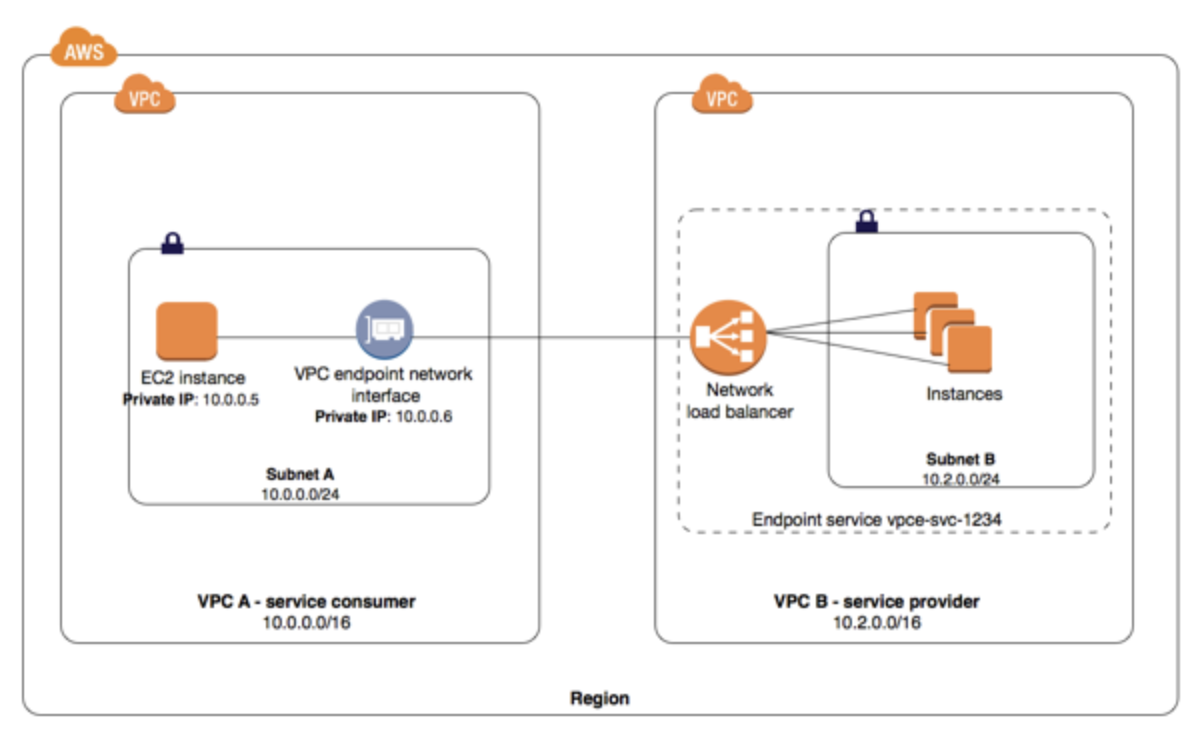Best Solution for Private Traffic between SaaS Provider and AWS Customers
Question
A big SaaS provider migrated one of its on-premises products to AWS since many customers (over 300) already have their own Virtual Private Clouds (VPCs) in AWS.
Due to certain product features, one key requirement is that all traffic between the service provider and customers should be private without being exposed to the internet.
The company's operation team already configured a VPC.
What is the best solution that can be recommended here?
Answers
Explanations
Click on the arrows to vote for the correct answer
A. B. C. D. E. F. G.Correct Answer - C.
One major requirement for this question is that traffic data should not be exposed to the public Internet.
Private connectivity can be provided by AWS PrivateLink between the SaaS VPC and customers' VPCs from other AWS accounts.
Option A is incorrect: Because the virtual private gateway is for VPN connection which does not work between AWS VPCs.
Option B is incorrect: This may work, but it is not as good as option.
C.
VPC peering is a relatively old solution to connect two VPCs privately.
However, it also has several limitations.
For example, the maximum limit is 125 peering connections per VPC, and VPC peering requires non-overlapping IP addresses.
Option C is CORRECT: Because by using AWS PrivateLink, it is very easy to connect services across different accounts and VPCs through the Amazon private network.
Option D is incorrect: Because NAT Gateway is used to route traffic from private subnets to the internet, which cannot be used between VPCs.

The best solution for the SaaS provider to ensure private communication with its customers' VPCs would be to set up a private VPN connection. This would provide a highly available and secure link between the SaaS provider and its customers.
Option A, setting up a virtual private gateway, is not the best solution because this only provides a secure connection between the VPC and the provider's own data center, not with the customers' VPCs.
Option C, creating a VPC peering between the provider's VPC and each customer's VPC, would work in theory but could become cumbersome and difficult to manage as the number of customers increases.
Option D, configuring an AWS endpoint service (PrivateLink), is a good option but would require the customers to create a connection from their VPC to the endpoint service using an interface VPC endpoint, which may not be feasible for all customers.
Option F, creating a NAT Gateway in the VPC, is not relevant to this particular requirement as it is used for providing Internet connectivity to resources within a private subnet.
Option G, modifying the main route table to allow traffic to other VPCs only through a specific gateway, would not be sufficient on its own to ensure private communication between the SaaS provider and its customers' VPCs.
Therefore, the best option is to set up a private VPN connection, which would provide a secure and private link between the SaaS provider and its customers' VPCs, allowing them to communicate without being exposed to the internet.